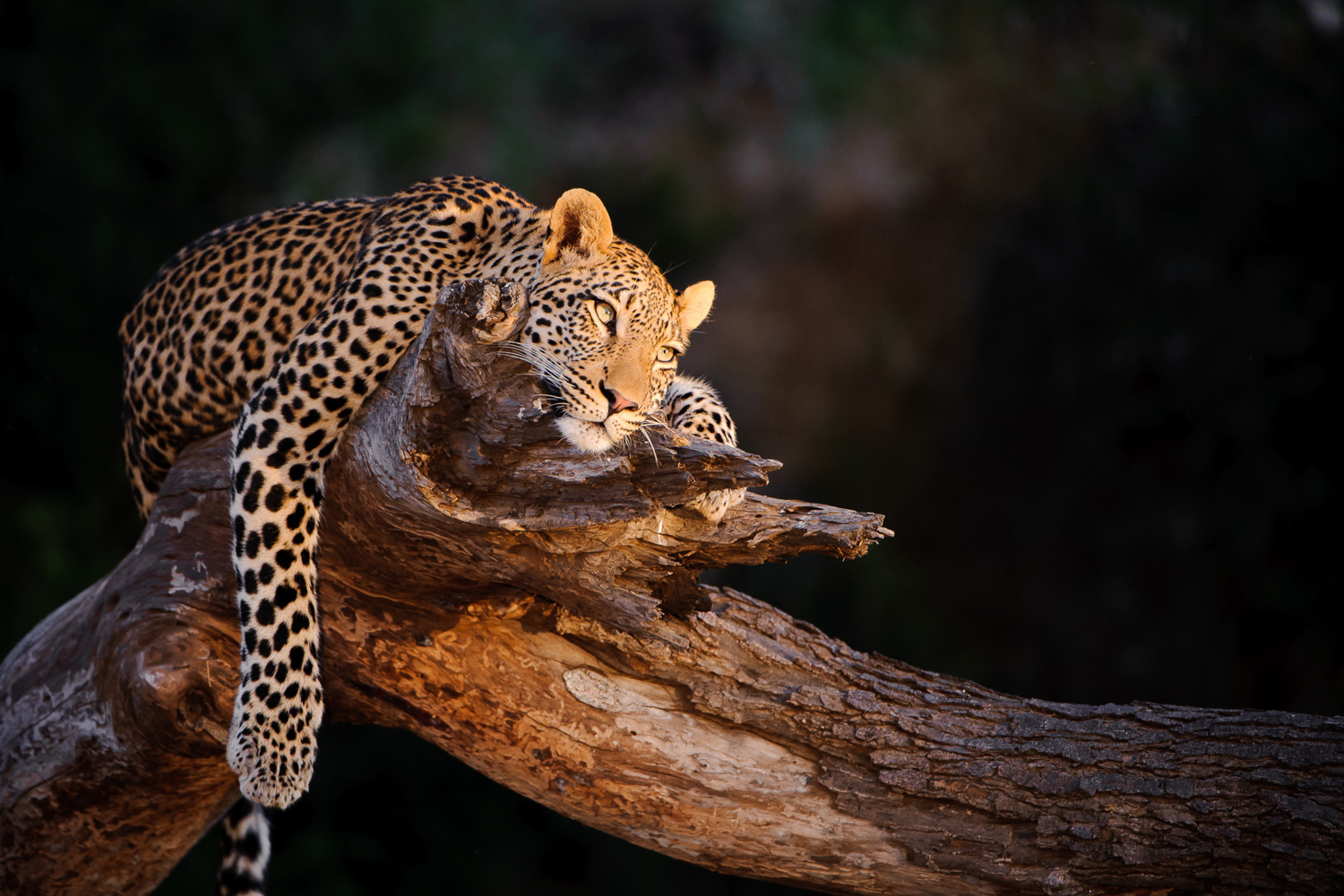An African safari is a major decision for any nature photographer looking to place themselves in the best possible location with the best local guides for the best possible photographs. That is why we were in Botswana again in 2023. Our fourteen-day photo tour focused on just two destinations within this amazing country. We started our safari on the Chobe River bordering the famous Chobe National Park in northern Botswana and then continued southeast to the wildlife rich Mashatu Reserve along the Limpopo River.
Safaris on the Chobe River are usually extremely productive, and this year was no different. Our safaris here focused on the river during the early morning through sunrise and late afternoon through sunset. At these times, animals direct their attention to the life supporting flow of the river.
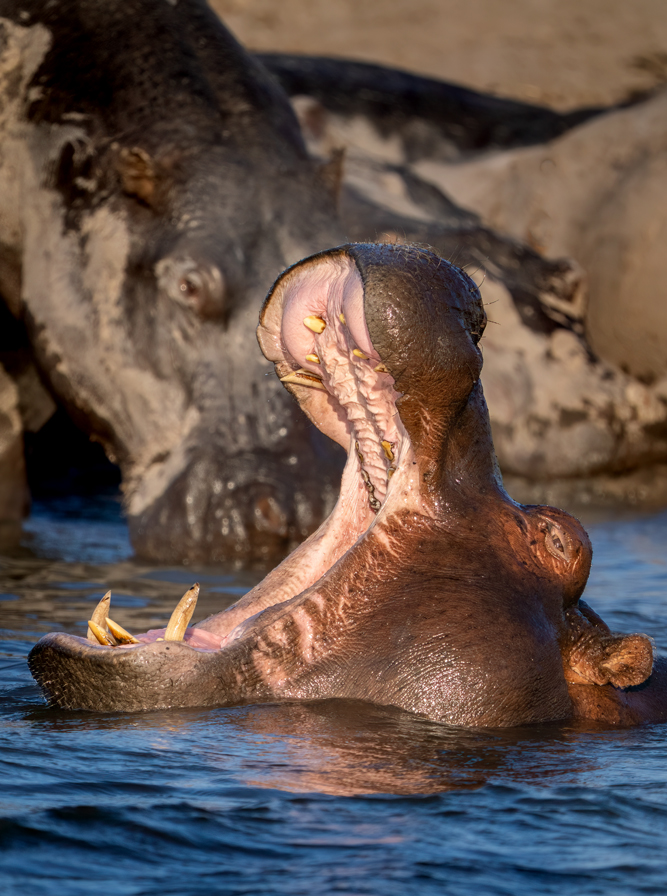
Our mode of travel was custom made—stable and comfortable flat bottom river boats designed to give us the best angle for capturing Botswana’s diverse wildlife at eye level. I should mention that our watercraft have a comfortable swivel seat and gimbaled camera mounts for each photographer so that everyone has an unobstructed view to each side of the boat. Traveling on the river this way, piloted by a skilled guide, we were able to approach most wildlife without disturbing their behaviors—thus allowing for frame filling shots of species from elephants to the smallest of kingfishers. From these amazing safari boats, we could intermingle with herds of hippos, impala, and buffalo. Hippos are photographed best from water level and these well-guided boats gave us the perfect perspective for capturing their antics on shore and in the river.
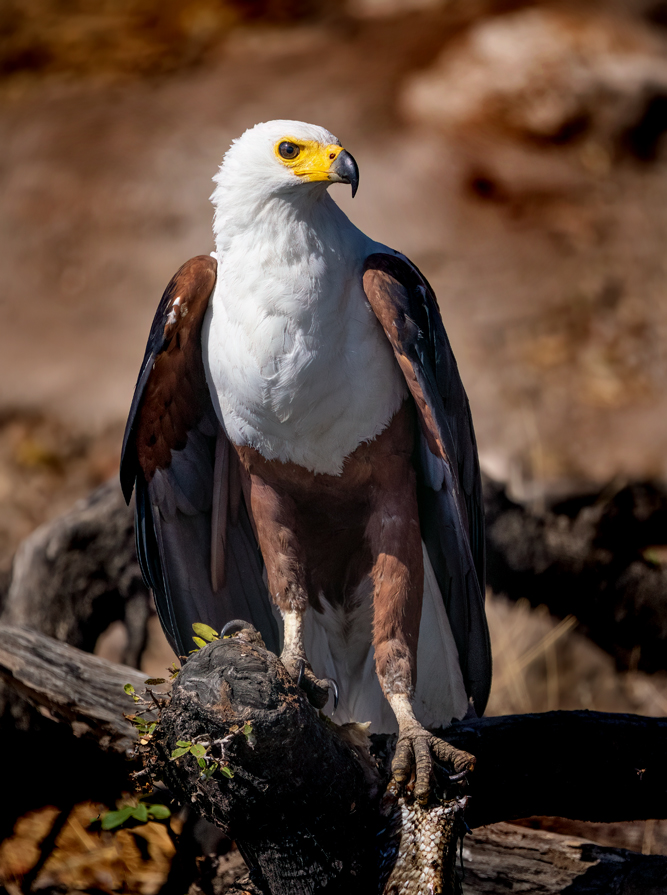
Along with the larger wildlife, the river attracts a myriad of birds, and we were able to spend all the time we desired photographing them at close range. A favorite subject for our group was the beautiful African fish eagle (common here) while wading birds such as storks and jacanas often graced our viewfinders. We also made sure to include plenty of time with some of the river’s more colorful avian residents like bee-eaters and kingfishers.
Africa is known for its extremely color-rich sunrises and sunsets and the Chobe did not disappoint. In fact, I think I can say the Chobe River produces some of the best sunsets for photographing dramatic wildlife silhouettes I have ever experienced. Each evening allowed us the opportunity to position our boat near wildlife to photograph them silhouetted against the tangerine African sky.
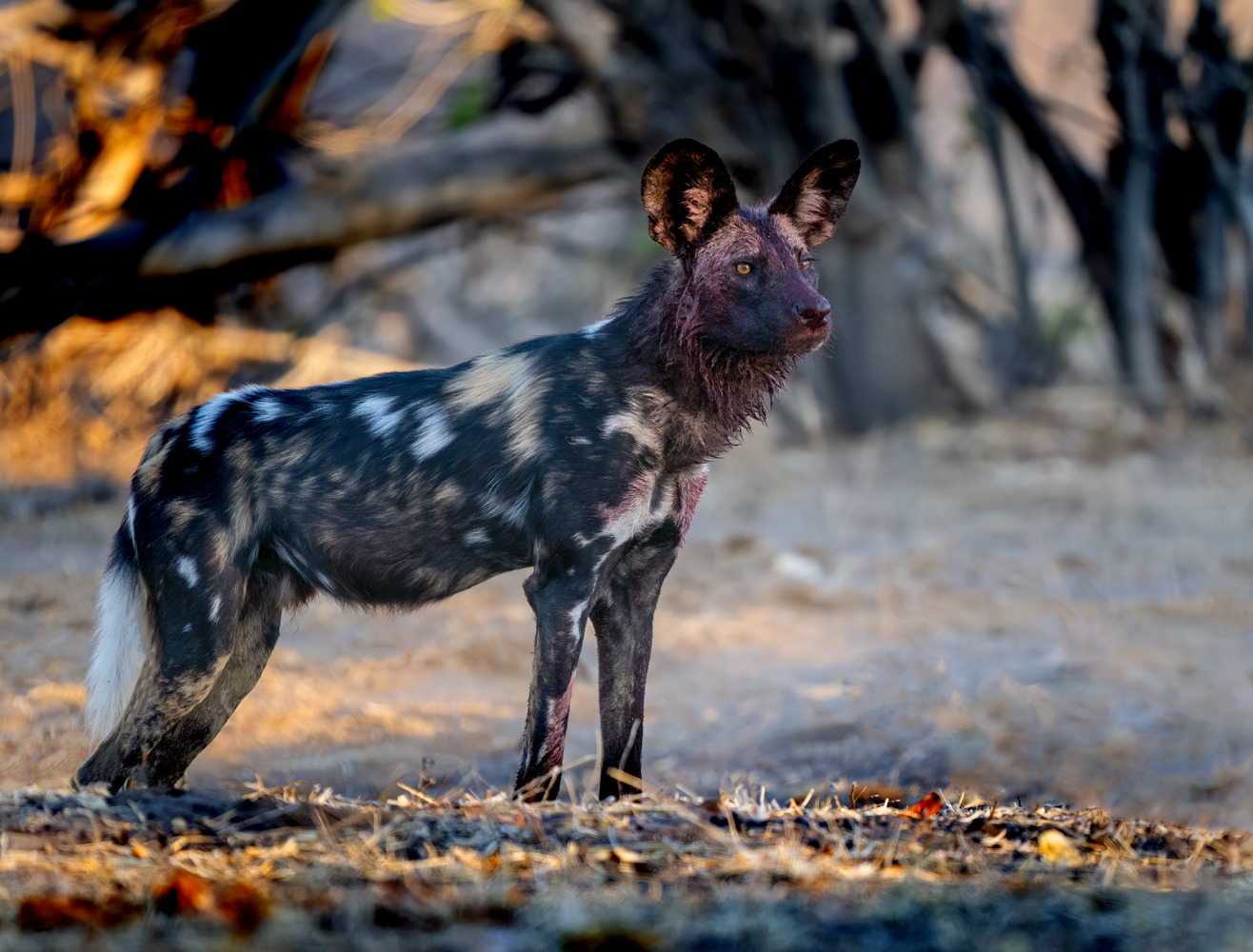
To complement our river-level photography, we enjoyed two outstanding two safari drives during our visit to the Chobe. Almost immediately, we found an incredibly photogenic pride of lions—and this was just the start! Every time I have been to Botswana, it seems that one sighting leads right into the next and we certainly caught a lucky break when we crossed paths with one of Africa’s more elusive predators—African wild dogs. When we came upon the dogs, the pack was in pursuit of an impala they had singled out of a small herd and the chase was on. African wild dogs are one of Earth’s most successful predators so there was a good chance that by following the dogs we may witness a kill. It did not take long before the impala was down so by the time we pulled into position the dispatch had been made and the dogs were well into the flurry of feeding. I am in awe by how quickly a complement of opportunistic vultures began arriving on the scene.
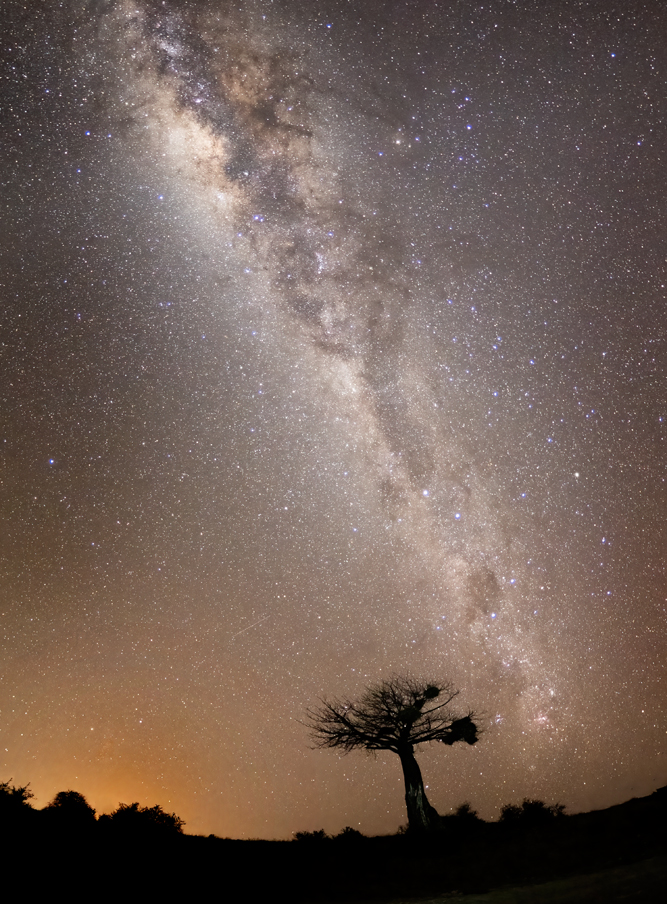
Each of our Chobe days would conclude at our comfortable lodging with celebratory drinks and an excellent meal served under the starry Botswana sky on the lodge deck.
With our time on the Chobe River complete, it was time to move on. After an easy two-hour charter flight, we arrived at the second of our two photography locations. Mashatu refers to, “land of the giants,” taking its name from the large Nyala trees that grow in this region of the Limpopo River.
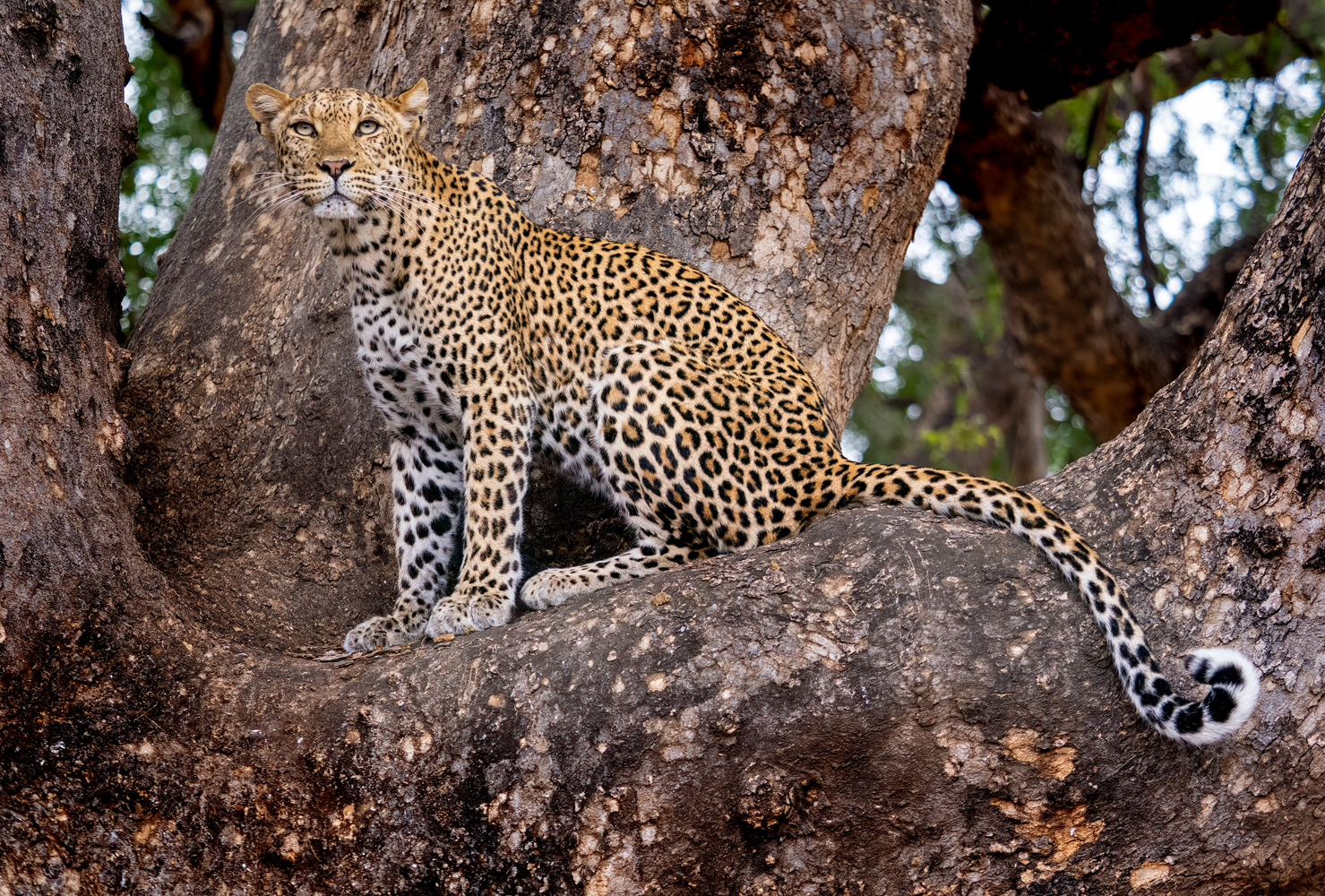
At Mashatu Reserve we found the dry season well underway, and it is an exciting time to be photographing wildlife here. We took advantage of the dry time with daily safari drives throughout the area’s arid landscape in search of fantastic wildlife subjects to photograph. I have always found this location to be easily one of the best regions of Africa to photograph leopards and this visit solidified my belief. Each safari drive turned up multiple leopards to train our cameras on. With luck in our favor, on a few occasions we photographed mother leopards with young. While leopards tend to be the stars of wildlife sightings, Mashatu is also excellent for lions. We had multiple opportunities to catch up with the local prides while out on drives. Lions, like many predators, spend much of their day at rest so this gave us excellent opportunities to work on close-up portraits of these big cats.
All the wildlife goes to the waterhole.
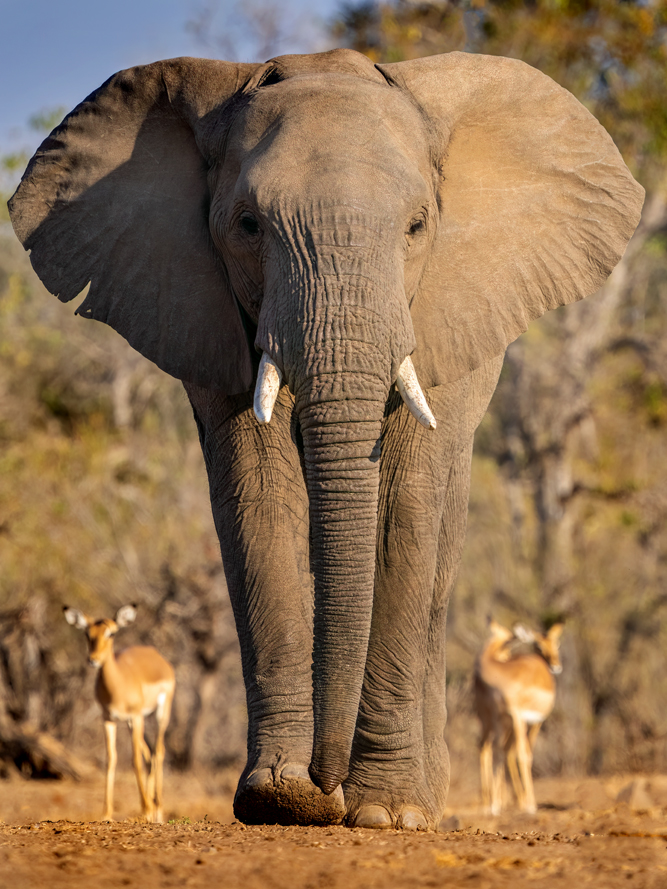
With water being a limited resource, it was the ideal time to visit the local waterhole. We set up in a uniquely constructed photo hide putting us eye level to the water’s edge. From the safety and comfort of this well-built hide, we could photograph the coming and goings of a multitude of animals. Often, there would be more than one species visiting the waterhole at one time. Here the wildlife visits would play out like a Broadway show. Performers included elands, impalas, zebras, wildebeests, kudus, baboons, and giraffes. Not to mention the diversity of birds that would take part in the waterhole performance. I must admit, it reminded me of a bar I frequented in college! When the stars of the show (a herd of elephants) would arrive, all other game would take a back seat and observe the watering antics of the elephants, waiting until the pachyderm stars moved on and the waterhole play returned to a quieter tone. On one waterhole visit, some of our photographers were treated to a rare visit from a local lion pride as they arrived to drink at the end of a warm day in the bush before disappearing into the surroundings for the nightly hunt.
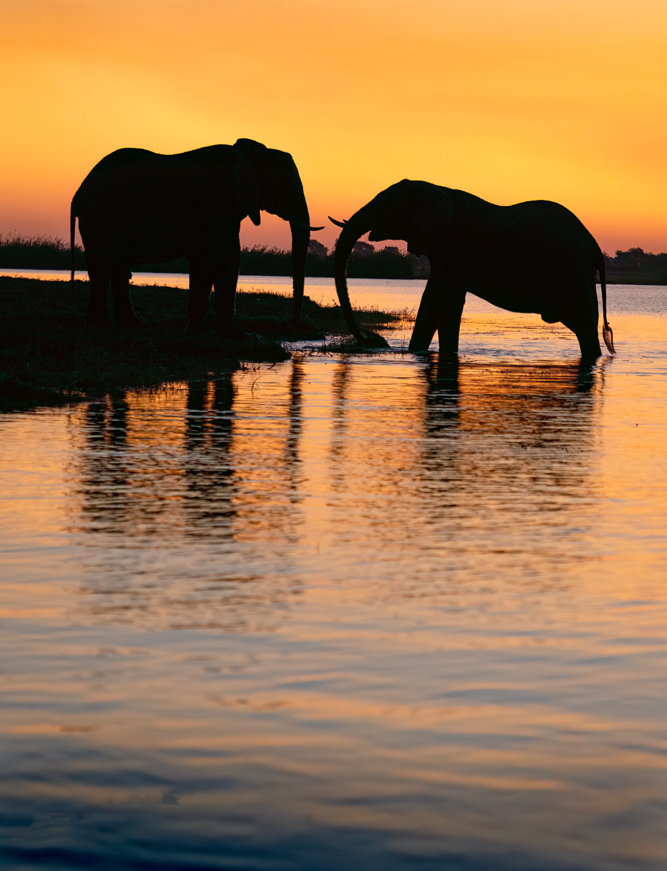
As our journey was beginning to wind down, we reflected on how both of our chosen safari destinations complimented each other for iconic African wildlife photography. For those who have never done an African photo safari, you might think one trip to Africa would be enough—but not true, especially when considering a destination like Botswana. There are always new animal species to photograph and new situations to encounter.
As a photo tour leader, it is a pleasure for me to bring a group on a safari where local staff go out of their way to make our travelers feel safe and comfortable while getting the group to the best possible places to capture incredible images. With local guides locating wildlife and placing the traveler at the best angle in the best light, I was personally available to collaborate more closely with individual travelers to enhance their photography skills and help them capture iconic images during their Botswana photo safari.


